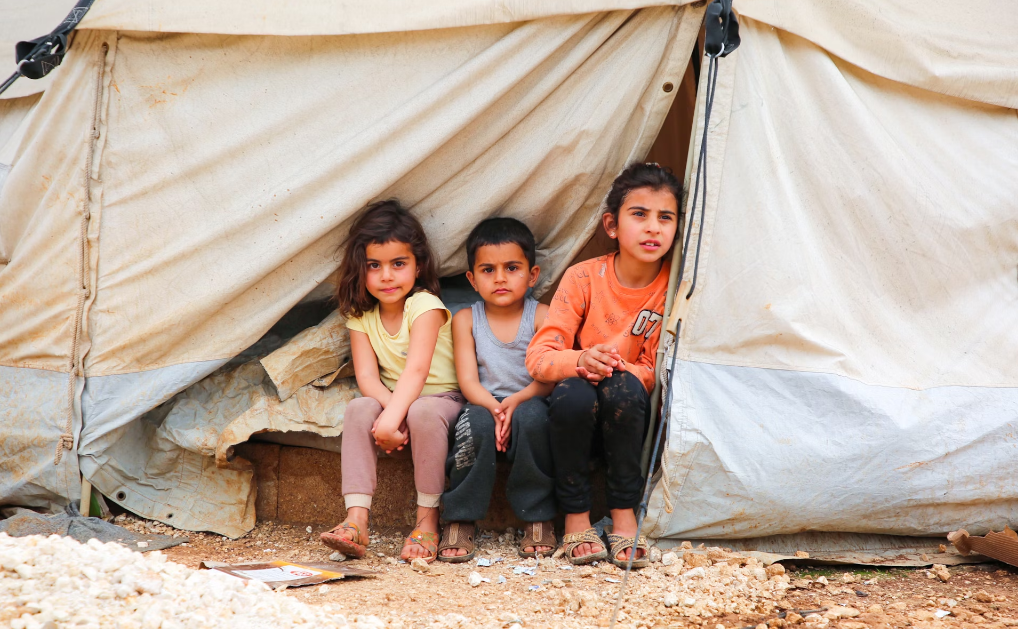
What Schools in War Zones Teach Us About Kids’ Health Everywhere
A child sits on a cracked cement floor, scribbling math problems on a chunk of cardboard. Outside, the echoes of gunfire and shouting fade—but the trauma doesn’t. This isn’t just a story from a faraway war zone. It’s the front line of global child health—and the lessons we’re learning there could reshape how we care for kids everywhere.
Here’s the kicker: Nearly 1 in 5 children today is growing up in or fleeing from armed conflict. But despite all the aid flowing in, we don’t actually know how well these kids are doing—because the systems we use to track their health are broken, fragmented, and full of holes.
A new review of child public health data in crisis zones just dropped, and it’s sounding the alarm: We’re measuring the wrong things, missing the most vulnerable, and ignoring the very basics of what it means for a child to thrive. And the implications go way beyond war zones.
Let’s unpack why that matters—to all of us.
Schools, Screenings, and Survival
Whether you’re a teacher helping a child calm down after a meltdown, or a parent navigating a mental health diagnosis, you already know that health isn’t just physical. It’s developmental, emotional, social. But here’s the twist: In fragile and conflict-affected regions, the official “health indicators” barely scratch the surface.
According to the new scoping review, out of the 668 health indicators tracked in places like Syria, Sudan, or Gaza, the vast majority focus on nutrition, infections, and mortality. Only a tiny fraction measure things like:
- Early childhood development
- Disability outcomes
- Mental health
- Social support
That’s right: The things that most shape whether a child can learn, grow, and connect with others? Often not even counted.
Why? Because the people designing the health tracking systems are often siloed—nutrition people tracking nutrition, educators tracking school attendance, public health officials tracking outbreaks. There’s no shared system. And without shared data, we can’t build shared solutions.
The Real Story in the Numbers
Here’s where it gets even more eye-opening. Among the 500+ indicators that were recommended by experts, more than half weren’t clearly defined. Some even had typos or vague age categories like “child” without explaining whether that meant age 0–5 or 0–18.
Imagine being a school psychologist trying to compare trauma screenings across districts—and each school defines “trauma” differently. That’s what humanitarian workers are dealing with on a global scale. It’s not just messy—it’s dangerous. Bad data leads to bad decisions.
And the fallout lands hardest on the kids who are already the most vulnerable.
From Conflict Zones to School Zones
So why should a parent in Pennsylvania or a school counselor in Kansas care about what’s going wrong in a field hospital in South Sudan?
Because these same gaps in data and attention show up in our own backyard.
- How many schools are regularly screening for developmental delays or trauma after disasters?
- How many districts track disability outcomes beyond test scores?
- How often do we treat behavioral challenges as “discipline issues” instead of early warning signs?
The core issue is the same: When we don’t measure what matters, we can’t protect what matters. Whether it’s in a conflict zone or a classroom.
What Needs to Change?
The review doesn’t just spotlight problems—it points to a solution that’s surprisingly simple: Consensus.
We need agreement on a core set of child health indicators that actually reflect children’s lives—not just whether they’re alive. That means tracking early development, disability, mental health, and caregiver wellbeing, just as much as physical illness or nutrition.
And these indicators need to be:
- Clear (no more vague definitions)
- Feasible (realistic for schools, clinics, or aid workers to collect)
- Comparable (standardized age ranges and definitions so we can track progress)
One especially hopeful finding? Even in war-torn settings, five major agencies were able to routinely track 152 indicators. That proves it’s possible. Now we just need to be smarter—and more inclusive—about what we choose to track.
Takeaway for Parents and Educators
You don’t need to be working in a refugee camp to act on these insights.
Here’s what you can do today:
- Advocate for better data in your school: Push for mental health screenings, development tracking, and inclusive measures for students with disabilities.
- Ask smart questions: When your school district talks about student “success” or “well-being,” ask how they’re measuring it—and who might be left out.
- Support inter-agency collaboration: Whether it’s in your community or on the global stage, the more health, education, and social service sectors work together, the better outcomes we’ll see for kids.
Let’s Talk About It
💬 What’s the biggest mental health challenge you see in schools today?
💬 How can schools better support students’ emotional well-being?
💬 What’s one insight from child psychology or development that changed the way you parent or teach?
We can’t fix what we don’t measure—and we can’t measure what we don’t value.
Let’s start valuing the whole child. Every child. No matter where they live.
Help a Child. Shape a Future.
Your $5/month subscription to This Week in School Psychology gives you more than insights—it gives you tools to change lives. Every week, we break down the latest research into plain, practical guidance you can use to support students, reduce stress, and create healthier schools.
We’re fully independent, and your support keeps this mission alive. Subscribe now and be part of the solution.



